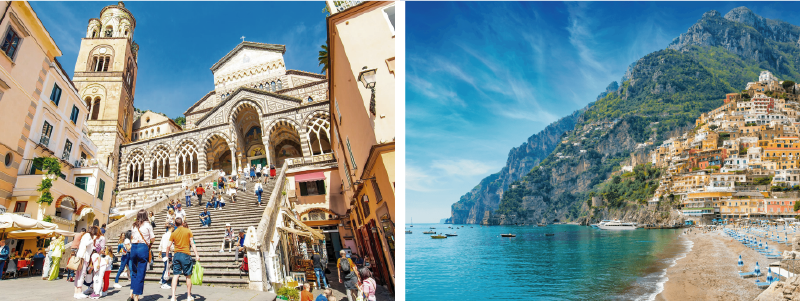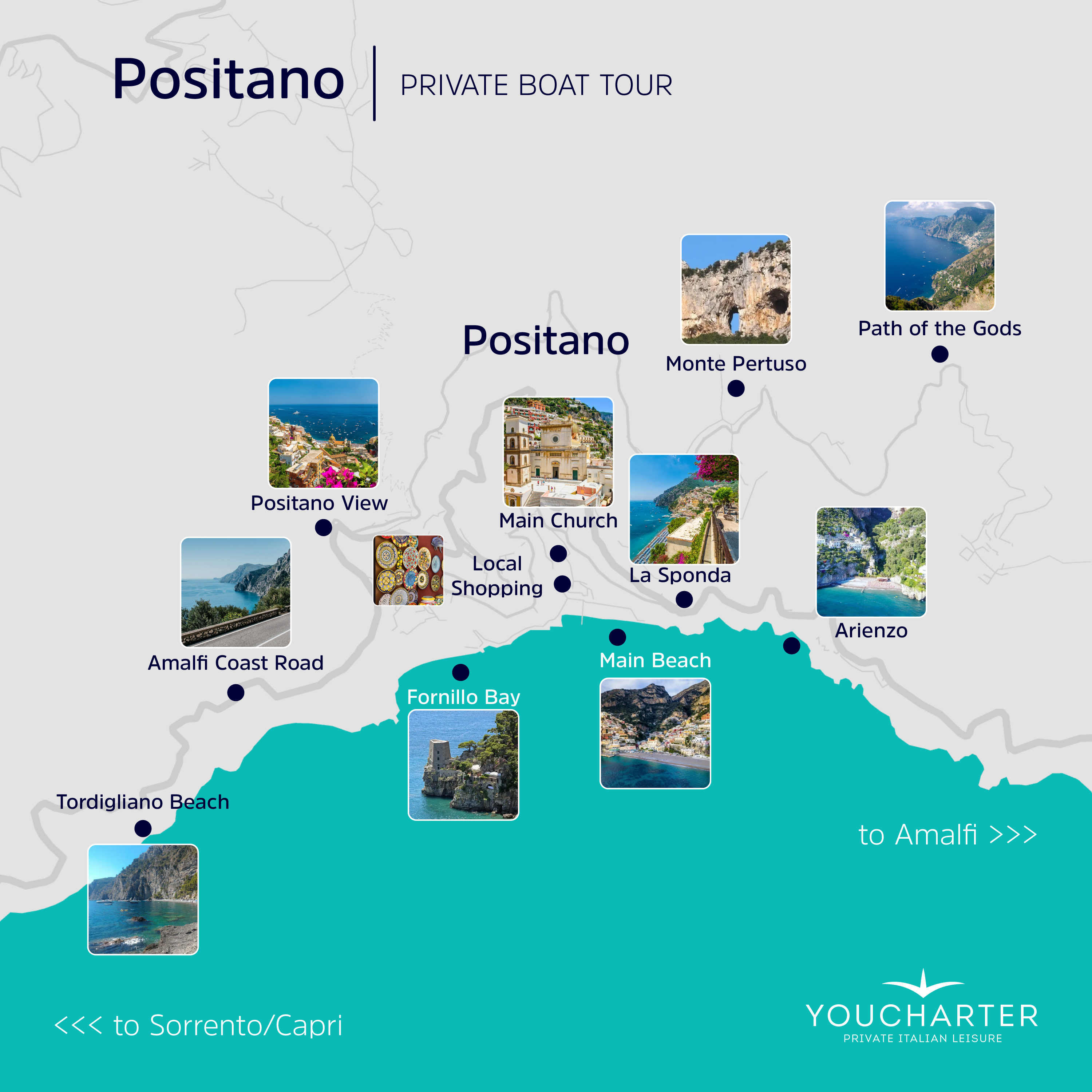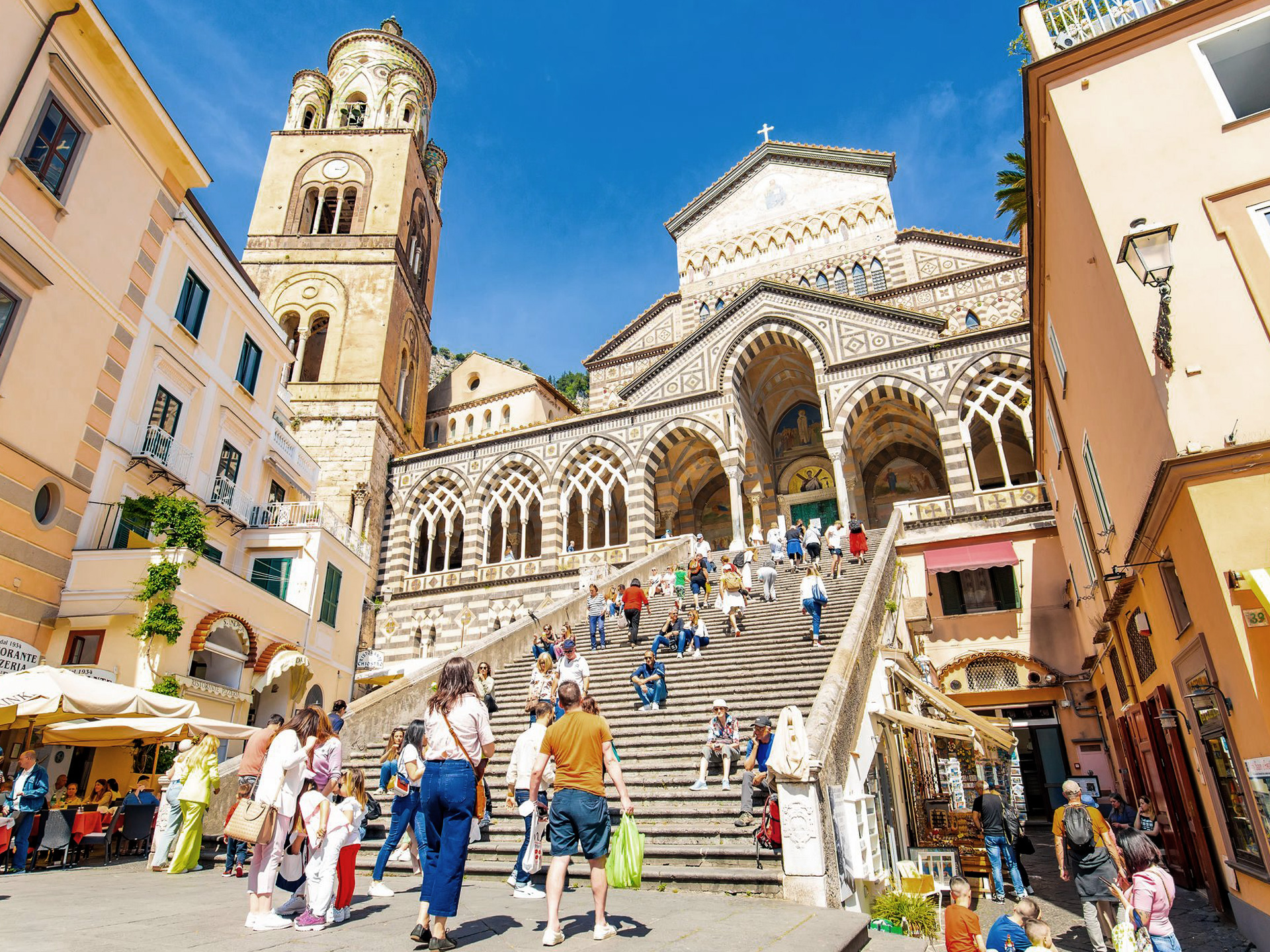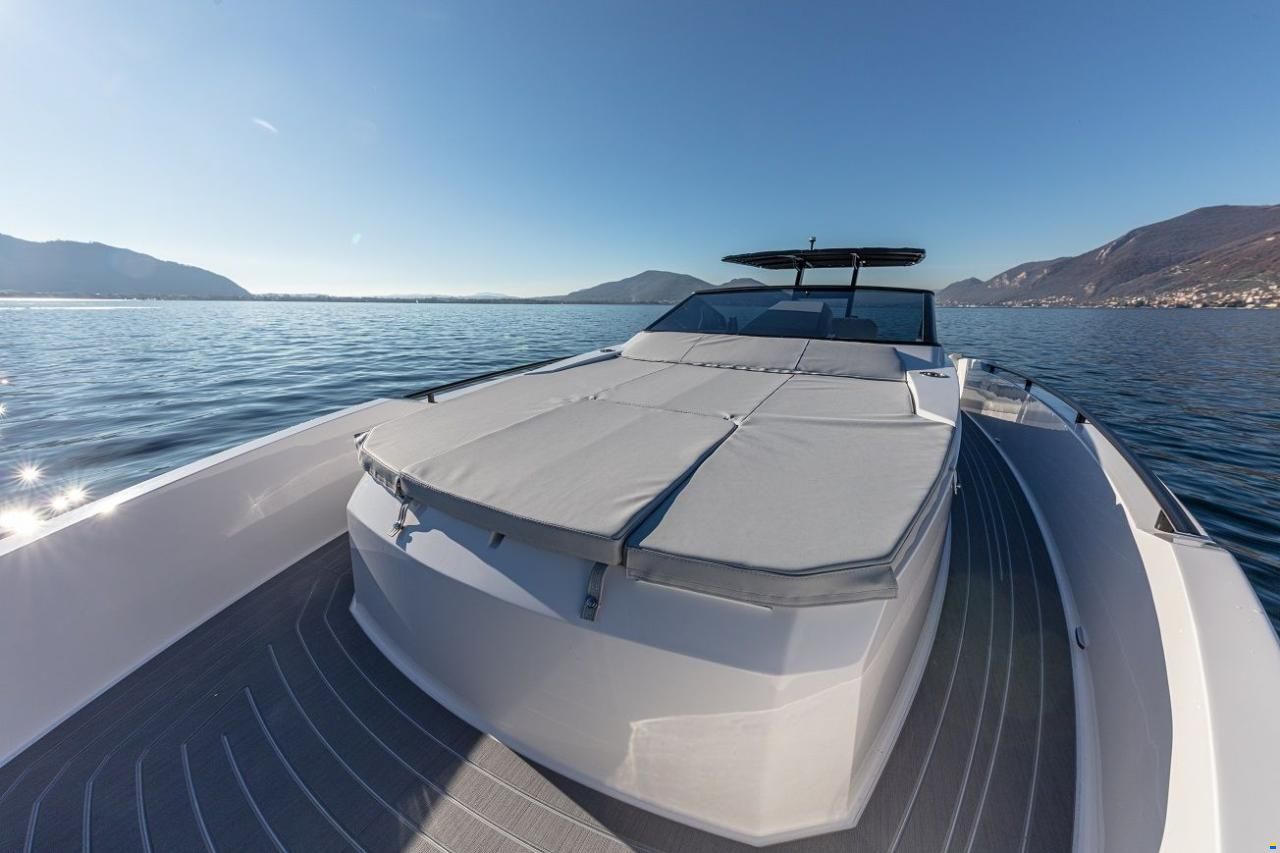planning in visiting Amalfi?
choose from one of our day trip by private boat to Amalfi & nearby destinations
Our private boat tours have daily departures from these harbors:
Sorrento | Capri | Positano | Amalfi | Naples
Let’s discover Amalfi town…
Traditions in Amalfi
Amalfi’s history can be traced back to Roman times when it was a thriving maritime republic.
The town served as a trading hub, and its strategic location made it an important center for commerce and navigation.


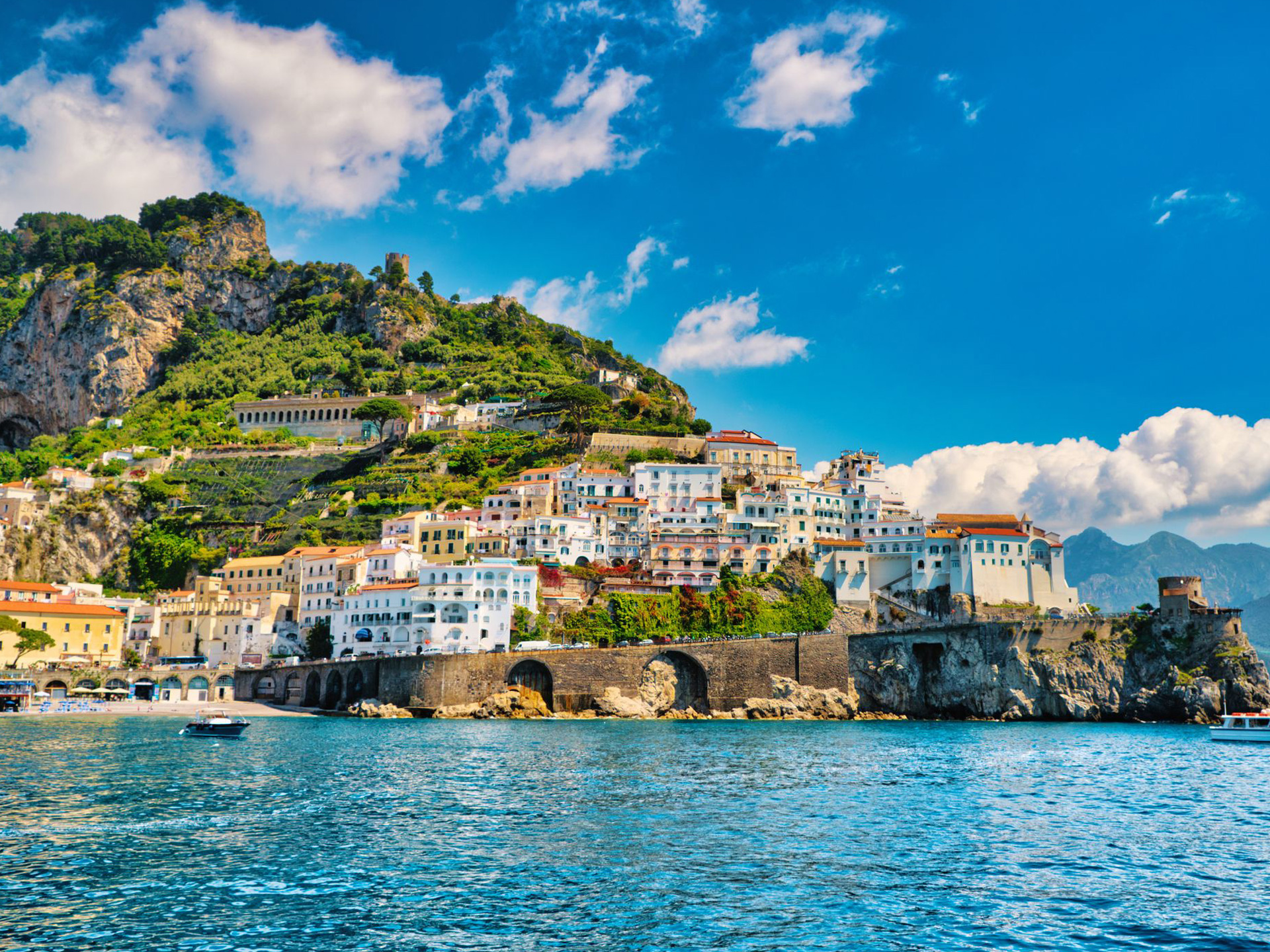
Maritime Republic of Amalfi (9th to 11th centuries):
Amalfi rose to prominence during the Middle Ages when it became one of the four major maritime republics in Italy, alongside Venice, Genoa, and Pisa.
The Maritime Republic of Amalfi was a powerful and independent city-state that played a crucial role in Mediterranean trade. Amalfi merchants were known for their maritime skills and traded with various cultures around the Mediterranean.
Amalfi Cathedral one of the most significant landmarks in Amalfi is the Amalfi Cathedral, also known as the Cathedral of Saint Andrew (Duomo di Sant’Andrea). Construction of the cathedral began in the 9th century and continued over several centuries. The cathedral’s architecture reflects a blend of different styles, including Arab-Norman, Gothic, and Baroque elements.
Decline and Foreign Domination:
Despite its maritime successes, Amalfi began to decline in the 12th century due to various factors, including political instability, internal conflicts, and the rise of other maritime powers.
The town came under the control of various rulers, including the Normans and the Angevins, during this period.
Later Centuries:
Amalfi continued to exist as a town, but its political and economic significance diminished compared to its medieval heyday.
In subsequent centuries, Amalfi experienced periods of cultural and economic revival, and its picturesque setting began to attract artists, writers, and travelers.
Today, Amalfi is known for its historical charm, stunning architecture, and its status as a popular tourist destination on the Amalfi Coast. The legacy of its maritime republic days is evident in its historic sites, including the Cathedral of Saint Andrew, which stands as a testament to the town’s rich history.

